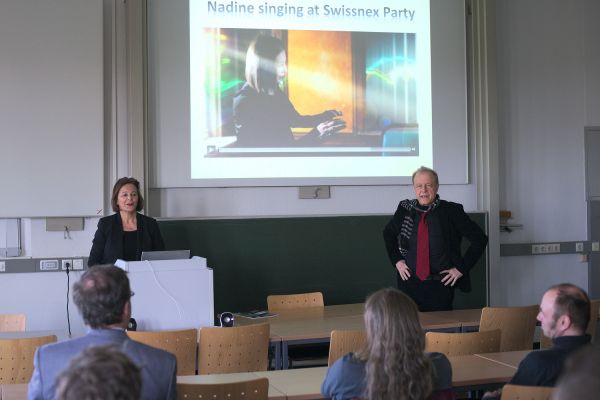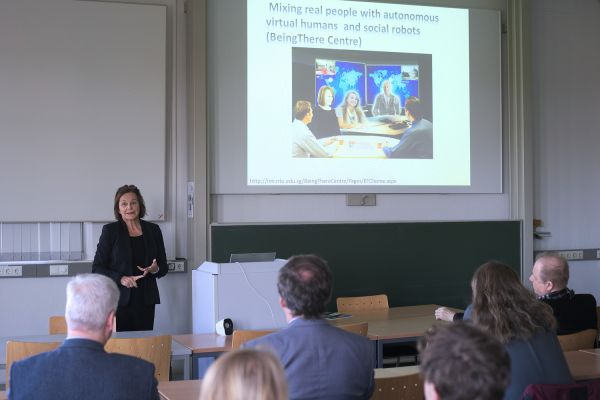Vortrag: Nadine a new social Robot
Am Mittwoch, dem 20.04.2016 wird Frau Prof. Nadia Thalmann einen Vortrag über den humanoiden Roboter Nadine halten.
Sehr geehrte Mitglieder der Fakultät für Elektrotechnik und Informatik,
ich möchte Sie zum Vortrag von Frau Prof. Nadia Thalmann (NTU und Uni Genf) über Ihren neuen "Social Robot" Nadine einladen
"Social robotics: what is new? Case study with Nadine a social robot.”
der Mittwoch, 20.4.2016 um 16 Uhr im Hauptgebäude der LUH, Welfengarten 1 im Raum F 435 stattfinden wird.
Der Vortrag wird den humanoiden Robot Nadine vorstellen, der in vielen Medien derzeit als "the Worlds most human-like robot" betrachtet wird, http://www.telegraph.co.uk/science/2016/03/12/meet-nadine-the-worlds-most-human-like-robot/
In letzter Zeit konnte man im Internet verfolgen, dass in englischen Medien Prof. N. Thalmanns neuer "Robot Nadine" eine "viral" anwachsende Aufmerksamkeit bekam.
Z. B. Google Suche mit "Robot Nadine" liefert ca. 540000 Einträge mit Referenzen zu Berichten u.a. im Fernsehen z. B. im BBC (World Service) cf. http://www.bbc.co.uk/programmes/p03dcblh aber u.a. auch bei Zeit-Online: http://www.zeit.de/video/2016-03/4789720849001/robotik-ein-humanoid-namens-nadine
Weiter unten finden Sie eine Zusammenfassung des Vortrags und im Attachment Informationen über die Vortragende Kurz-CV und Bild.
E-Mail - Anfragen zum Vortrag senden Sie bitte an FEW@welfenlab.de
Telefonisch sind Informationen ggf. unter Tel. Nr. 0511-7622910 erhältlich.
Vielen Dank.
Mit freundlichen Grüßen
F.-E. Wolter
Prof. Dr. Franz-Erich Wolter, Welfenlab
FG Graphische Datenverarbeitung
Institut für Mensch-Maschine-Kommunikation
Fakultät für Elektrotechnik und Informatik
Leibniz Universität Hannover
http://www.welfenlab.de/
Research Affiliate of MIT
Social robotics: what is new? Case study with Nadine a social robot.
Prof. Nadia Thalmann (NTU und Univ. Genf)
Summary: Over the last 30 years, Nadia Magnenat Thalmann has worked as a pioneer to model and simulate behaviour for Virtual Humans. First, a lot of work has been done for making them looking real, with hair and skin and cloth modelling but also to make them acceptable by users. In the early years of the 21st Century, she has been starting to work with a very realistic robotic head EVA to model mood, expressions, interaction at MIRALab, University of Geneva. Along with her team, she has developed several methods to be able to fully interact with her. During these last 3 years at Nanyang Technological University (NTU) in Singapore, she and her researchers have worked with a humanoid full robot, Nadine that is alike of her. The team has been working on recognition of gestures, emotions, speech, sound and also on fusion models and decision processes to enable reactions which are in line with what is being said and socially acceptable. Since the press conference on 29 of December 2015 that took place in NTU, Nadine has been cited in top magazines around the globe and been part of multitude of TV programs. (https://en.wikipedia.org/wiki/Nadine_Social_Robot).
In our talk, we like to present our global research and discuss finally what will be the role of these social robots in our society.






